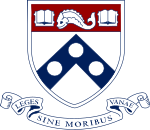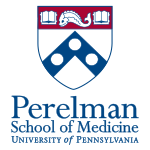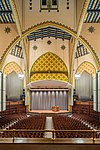University of Pennsylvania Museum of Archaeology and Anthropology
African art museums in the United StatesAnthropology museums in the United StatesArchaeological museums in PennsylvaniaArt museums and galleries in PennsylvaniaAsian art museums in the United States ... and 12 more
Egyptological collections in the United StatesMesoamerican art museums in the United StatesMuseums established in 1887Museums in PhiladelphiaMuseums of Ancient Near EastMuseums of ancient Greece in the United StatesMuseums of ancient Rome in the United StatesPre-Columbian art museums in the United StatesPre-Columbian studiesUniversity museums in PennsylvaniaUniversity of Pennsylvania Museum of Archaeology and AnthropologyUniversity of Pennsylvania campus

The University of Pennsylvania Museum of Archaeology and Anthropology—commonly known as the Penn Museum—is an archaeology and anthropology museum associated with the University of Pennsylvania. It is located on Penn's campus in the University City neighborhood of Philadelphia, at the intersection of 33rd and South Streets. Housing over 1.3 million artifacts, the museum features one of the most comprehensive collections of middle and near-eastern art in the world.
Excerpt from the Wikipedia article University of Pennsylvania Museum of Archaeology and Anthropology (License: CC BY-SA 3.0, Authors, Images).University of Pennsylvania Museum of Archaeology and Anthropology
South Street, Philadelphia
Geographical coordinates (GPS) Address External links Nearby Places Show on map
Geographical coordinates (GPS)
| Latitude | Longitude |
|---|---|
| N 39.949 ° | E -75.1911 ° |
Address
Penn Museum (University of Pennsylvania Museum of Archaeology and Anthropology)
South Street 3260
19104 Philadelphia
Pennsylvania, United States
Open on Google Maps






